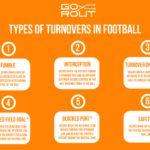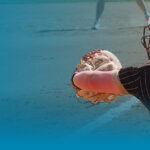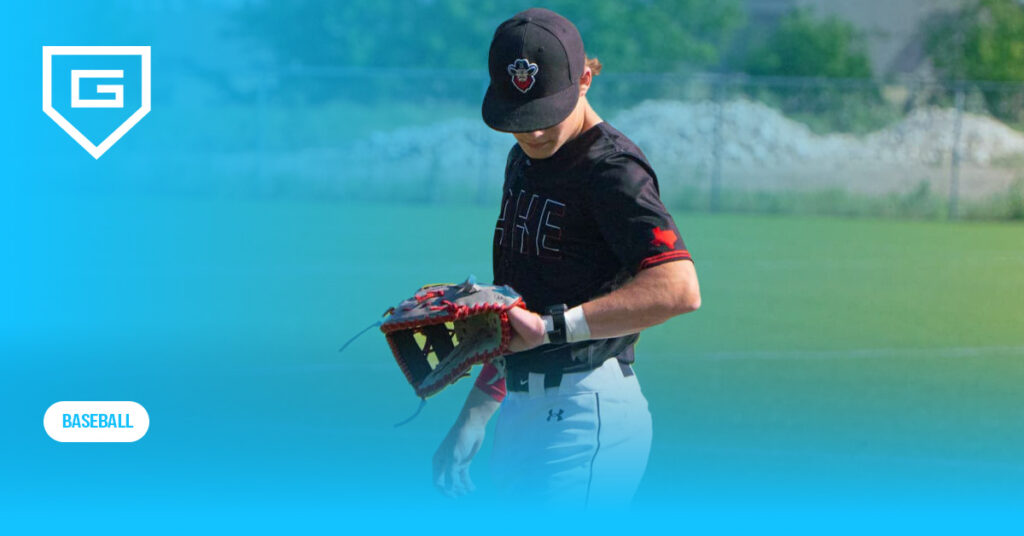Baseball Signals System: Cracking the Code for Team Success
Reading Time: 10 minutes
Reading Time: 10 minutes
Baseball is a game of strategy, communication, and execution. A well-organized team that communicates effectively will maintain a competitive edge over opponents.
The baseball signals system is one of the most important aspects of communication in the game.
These signals convey messages between the coach and the players on the field. They indicate plays, pitches, and defensive adjustments.
In this article, we will explore the fundamentals of the baseball signals system and explain how teams can use GoRout Diamond to improve their communication and execution, resulting in more wins on the field.
Understanding the Basics of a Baseball Signals System
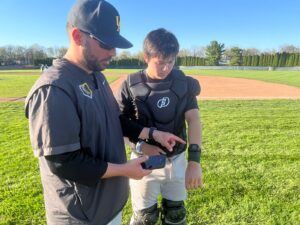
A baseball signals system is a method for catchers, pitchers, and other team members to communicate with each other during games.
It typically includes hand signals, gestures, and/or verbal cues to communicate pitch calls, defensive positioning and other strategies.
A baseball signals system coordinates teamwork and prevents opponents from intercepting and interpreting your team’s plays.
Advanced baseball coaching tools, such as catcher’s wristbands and pitch-calling devices, are the latest innovations preventing sign stealing, ensuring fair play and leading baseball teams to better execution.
The Components of the Baseball Signals System

A good baseball sign system balances secrecy, clarity, adaptability and variety to communicate strategies and tactics while preventing opponents from deciphering signals. These baseball signs can be categorized into offensive, defensive and base-running signals.
Offensive signals
Offensive signals in baseball are cues for bunting, hit-and-runs, and other means of generating scoring opportunities. Sign systems can vary between teams according to age and level of play. Here are some common ways to give offensive signals in baseball.
Bunt signs
The third base coach may tap their belt to signal for a bunt, and then another part of their body to relay which type of bunt they want. This clearly alerts the batter to the decided upon play.
Types of bunts:
- Sacrifice bunt
- Drag bunt
- Push bunt
- Squeeze bunt
- Safety squeeze
Steal signs
- Hand signal: The third base coach touches their cap in a specific way to signal to the baserunner that it’s time to steal.
- Verbal cue: The first base coach calls out a predetermined phrase to give the green light.
- Count-based sign: The coach indicates that the baserunner should steal on a certain count, like “0-2”, meaning the baserunner should attempt to steal on a 0-ball, 2-strike count.
- Timing-based sign: The coach gives the steal sign based on the timing of the pitcher’s delivery by instructing the baserunner to go on the pitcher’s leg lift.
- Fake signal: Using a false steal sign to deceive the defense. Giving a steal sign but having the baserunner hold back to draw a throw from the catcher creates an opportunity for another baserunner to advance.
Hit-and-run signs
- Hand signal: The third base coach touches their nose or another predetermined part of their body to indicate a hit-and-run play.
- Verbal cue: The first base coach calls out a specific word or phrase, like “hit it” or “swing away,” to signal a swing at the pitch.
- Count-based sign: The coach states the hit-and-run is for a specific count, like “1-0”, indicating that the batter swings on a 1-ball, 0-strike count.
- Timing-based sign: The coach gives the hit-and-run sign based on timing by instructing the baserunner to start running as the pitch is thrown.
- Double sign: A baseball coach uses two signs in quick succession, the second being the hit-and-run sign.
Signs for base runners
Certain signs for baserunners convey instructions on when they expect the runner to steal a base, advance on a hit or hold their position.
- Steal signs: Indicate to the baserunner when they should attempt to steal a base with hand signals, verbal cues or timing-based indicators to communicate when to make their move.
- Stop and hold signs: Coaches instruct runners to remain on their current base to prevent baserunners from running into outs.
- Advance signs: Tell players when to attempt to advance to the next base on a hit by waving arms, pointing or verbal commands.
- Secondary lead signs: Prompt baserunners to take a larger secondary lead off the base in anticipation of a wild pitch or passed ball.
Defensive signals
Defensive signals involve pitch type, location and positioning to help the pitcher and catcher coordinate their approach.
Pitch type and location
The catcher and pitcher use hand signals to communicate the type of pitch to be thrown, like fastball, curveball, changeup, and its intended location – inside, outside, high, or low.
These signals are a sequence of finger placements by the catcher to the pitcher that can be changed throughout the game.
Pitch type signal examples:
- Fastball: One finger down
- Curveball: Two fingers down
- Slider: Three fingers down
- Changeup: Four fingers down
Pitch location signal examples:
- Middle: One finger down
- Inside: Two fingers down
- Outside: Three fingers down
- Low: Four fingers down
- High: Five fingers down
- Outside the zone: Fist down
Positioning signals
Coaches use positioning signals in baseball to instruct fielders on where to position themselves based on the batter, game situation and defensive strategy.
- Infield shifts: The coach signals infielders to shift their positions to one side or the other based on a hitter’s tendencies.
- Outfield depth: Coaches use signals to adjust the depth of outfielders based on a hitter’s power, speed of baserunners and wind conditions.
- Double play depth: With a runner on first base and fewer than two outs, the coach tells the infielders to position themselves for a potential double play.
- Bunt defense: Signals instruct infielders to position themselves in anticipation of a bunt. Corner infielders charge towards home plate, while middle infielders cover first and second or third base.
- Shading: Coaches instruct outfielders to shade towards one side of the field based on a hitter’s tendencies or the intended pitch location.
Designing a Baseball Signals System for Your Team
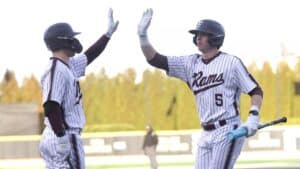
Designing a baseball signals system for your team begins with a thorough assessment of the team’s needs and capabilities. Consider the players’ familiarity with sign systems, ability to interpret and execute signals, and any challenges or preferences unique to your team.
Develop a simple yet effective set of signs. Opt for clear, easy-to-understand baseball signs that all players can remember. Incorporate variations and decoys into your sign system to keep opposing teams guessing and avoid stolen signs.
Teaching Your Team the Baseball Signals System
Begin teaching your team the baseball signals system gradually, starting with the basics and slowly adding complexity as players become more familiar with the signals.
Use clear and concise explanations, demonstrations and visual aids to illustrate each signal and its corresponding meaning.
Incorporate interactive drills and exercises, such as signal recognition games and simulated situations, to reinforce memorization. Encourage active participation and engagement from players so that there are plenty of opportunities for practice and repetition.
Player feedback is crucial for understanding. Motivate players to ask questions, offer suggestions and provide input on the system and how it can be improved.
Keeping the Opposing Team Guessing
Complexity in signals is crucial to maintain the secrecy of baseball signs. Use signals that players can interpret quickly and efficiently, but implement decoys and fake signals to confuse opponents and keep your plays confidential.
Techniques for disguising your signs
Preventing opponents from stealing signs involves using multiple sets of signs and regularly changing them throughout the game. Coaches do this to make it difficult for opponents to decode their signals.
Coaches also protect signs with decoy signals or “dummy signs”. These decoys mimic real signs but have no significance. The other team can misinterpret these signals and make incorrect assumptions about the call.
Use nonverbal communication methods—hand signals, body movements or a baseball pitch calling system like GoRout Diamond—to convey signs discreetly.
Recognizing and countering sign stealing
Teams must remain vigilant to identify signs stolen by opponents and implement strategies to mitigate it.
They must constantly monitor the behavior of opposing players and coaches for any suspicious activity, such as excessive attention to the signs or sudden changes in performance following a sign sequence.
Teams can change signs mid-game or use nonverbal communication methods to convey signals discreetly. On game day, remain observant, adaptable and proactive in countering sign-stealing tactics.
Advanced Strategies in Baseball Signals System
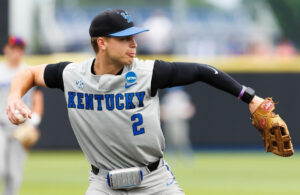
Sports coaching technology in baseball signals systems enhances communication and decision-making on the field. Coaches can simulate high-pressure situations to prepare players for game-like scenarios.
Coaches use situational signaling for advanced plays like defensive shifts, bunt plays, or hit-and-run situations to provide players with specific instructions on what to do during these situations.
You can leverage technology, like video analysis software or electronic pitch calling systems, to improve baseball signs’ efficiency, secrecy and effectiveness.
The Evolution of Baseball Communication Systems
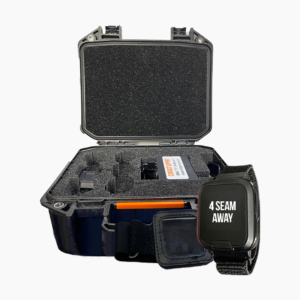
The evolution of baseball communication systems is shifting from old-school sign systems to advanced coach-to-player communication systems that transform how coaches share signs with their players during practice and games.
Electronic pitch-calling systems boost the speed, accuracy and confidentiality of coach-to-player communication.
This high-tech advancement minimizes the risk of opposing teams stealing signs while providing valuable data and insights for optimizing pitch selection strategies.
What is GoRout Diamond?
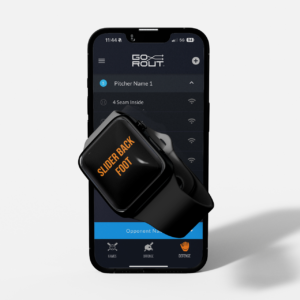
The GoRout Diamond system consists of baseball communication devices designed for coaches and players. This cutting-edge technology enhances player performance, streamlines communication and optimizes practices.
Coaches use the GoRout Diamond platform to create and customize practice plans, drills and game scenarios tailored to their team’s needs. Players receive and access these resources on their wearable player wristwatches.
GoRout Diamond allows seamless collaboration and sharing of instructions between coaches and players on the baseball field to improve player development, boost practice efficiency and elevate on-field performance.
Benefits of implementing GoRout Diamond
With its long list of benefits, this advanced baseball pitch-calling system can take your baseball signs and communication to the next level. Here are some of the countless benefits:
- No WiFi required: You can use GoRout without an internet connection as it relies on GoRout Air™, a proprietary system based on radio airwaves. It ensures uninterrupted real-time sharing of signals during practices and games, anywhere and anytime.
- Full encryption: All information sent through GoRout is fully encrypted, ensuring secure and protected data transmission from sender to receiver.
- All-weather durability: GoRout systems can endure harsh weather conditions like rain, sleet, snow, and extreme heat.
- Completely customizable: You can tailor packages to fit your team’s needs.
- Increase player development: GoRout facilitates player development by providing customizable practice plans, drills, game scenarios, real-time feedback and analysis during practices and games.
- 100% warranty: A full warranty covers breakage, giving customers peace of mind about its reliability.
Setting up GoRout Diamond for your team
GoRout Diamond is straightforward to set up.
GoRout Air™ operates on a national infrastructure that uses a spectrum frequency system to facilitate smooth communication between our software and hardware via radio airwaves. This groundbreaking technology operates coast-to-coast across the United States, providing teams with real-time signals without interruptions.
With GoRout Air™, there is no need for syncing, routers, setup, or WiFi connectivity.
On-field coaches app

The GoRout Diamond mobile app is a user-friendly and powerful tool for building pitch calls. It also allows coaches to set defensive shifts and quickly build out offensive signs.
With just one tap, coaches can create a new game, organize pitch groups and send specific pitch calls directly to the player device on the field. All calls made within the app are fully customizable.
Experience the app here to see how GoRout can help you with your next win.
On-field player device
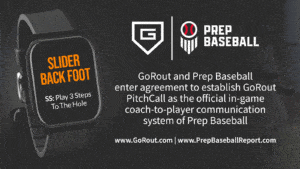
The GoRout wristbands are encrypted for privacy and security, and teams can use them in games and practices without WiFi connectivity.
Players can effortlessly select their position and immediately receive position-specific messages and signals, streamlining communication and enhancing performance on the field.
Integrating GoRout Diamond into practice sessions

Source: GoRout
Implementing a baseball pitch-calling system into practice boosts efficiency and simplifies communication among teammates.
This system enhances on-field communication for instant strategy adjustments, coordinated pitch selection and optimized defensive positioning.
GoRout contributes to quicker decision-making and minimizes miscommunication. Our system ensures everyone is on the same page to make practices smoother and more synchronized.
GoRout Diamond in live games
GoRout equipment is available for use in professional, college, high school, and youth games. Our product has undergone rigorous testing and meets the safety, quality, and usability standards required for use.
With this endorsement, coaches and players can confidently rely on GoRout Diamond during games to enhance their performance.
Our product has been recognized for its effectiveness and reliability at a variety of levels.
Success stories: GoRout Diamond in action
Countless GoRout testimonials from real-life coaches attest to the effectiveness of GoRout Diamond in achieving success on the field. With over 2,000 teams giving us trust, GoRout has become synonymous with faster communication and overall success in coaching throughout sports.
“The watches have been awesome! They totally changed our pace of play and execution on pitches! Big fan of [GoRout] and will be recommending it to other coaches!”
– Michael Boswell Tiffin University | 2024
Future of Baseball Signals System
Wearable technology in sports offers sophisticated systems that leverage cutting-edge devices. These devices enhance communication, strategy and performance by providing real-time tracking and analytics capabilities.
Play-calling technology and smart devices enable coaches and players to communicate more effectively. Artificial intelligence and machine learning help coaches make informed decisions based on situational context and opponent tendencies.
The future of baseball sign systems is technology-driven, and GoRout Diamond is at the forefront of this revolution.
Conclusion
Baseball signal systems are integral to strategy and communication on the diamond.
As technology advances, baseball sign systems become more sophisticated and offer teams greater efficiency and effectiveness in communication and decision-making.
Coaches embrace innovation and leverage the latest advancements to stay ahead of the curve and maximize their game-time performance.
Give your team the necessary advantage and get a quote from GoRout today.
FAQs about the Simple Baseball Signs
What is the new baseball signal system?
A pitch-calling device is a wearable device that coaches and players use to communicate in real-time. It ensures quick communication of pitch calls and can be used to assign defensive shifts and give other signs to batters and baserunners.
How do baseball signals work?
Traditional baseball sign systems involve the catcher using their hand to give a sign for the pitch and its location. Advanced pitch calling systems signal the pitcher electronically to save time and eliminate sign stealing.
How do pitchers get signals now?
Advanced pitch-calling technology, like GoRout Diamond, can now give pitch calls to catchers, the pitcher and all team members wearing wristwatch devices.

